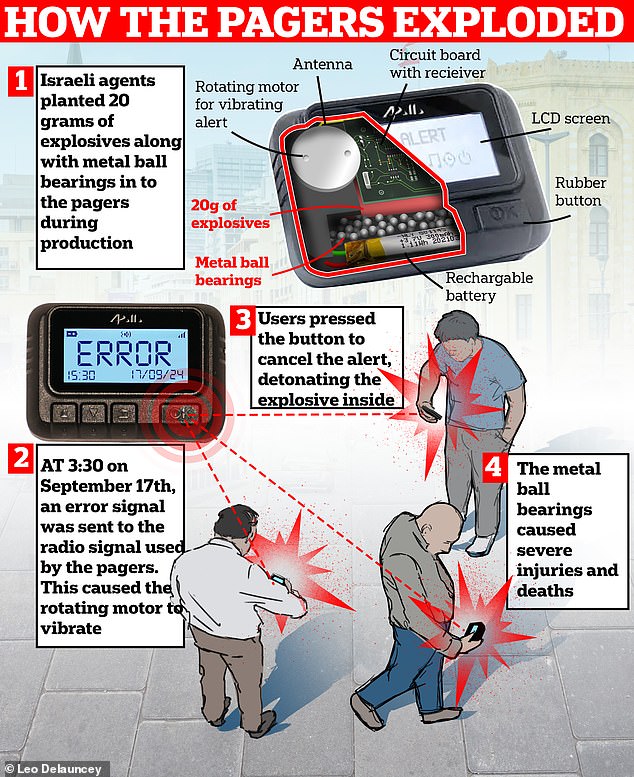The coordinated explosion of thousands of pagers and radios used by Hezbollah members in Lebanon and Syria earlier this week marked a new dawn of clandestine warfare.
The astonishingly coordinated and devastatingly effective attack, widely regarded as the work of Israel’s Mossad secret service, wounded thousands of militants, not to mention many civilians.
Lebanese authorities on Thursday banned the carrying of radios and pagers on flights from Beirut airport, as Hezbollah, still recovering from devastating explosions, struggles to re-establish a secure command and communications network.
But the disturbing incident has also raised fears about whether such tactics could extend to technology that millions of people use every day, such as our precious smartphones, tablets and smartwatches.

Man bleeds after pager explodes in Beirut, Lebanon

On Tuesday, pagers used by Hezbollah members for vital communications exploded, injuring thousands of people. On Wednesday, radios and walkie-talkies also exploded, like the one pictured in the hand of the man standing next to the victim.
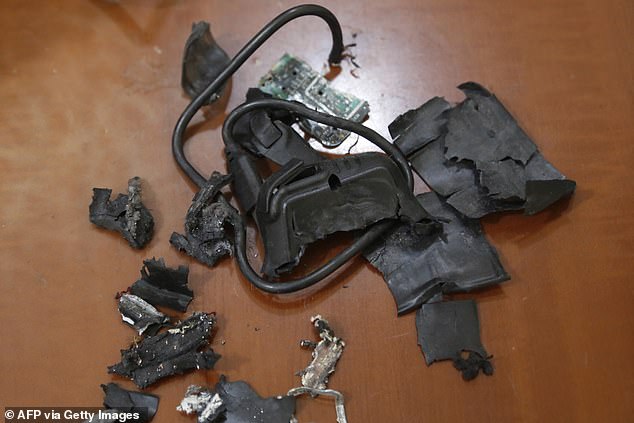
A photo taken on Sept. 18, 2024 in the southern suburbs of Beirut shows the remains of exploded pagers on display at an undisclosed location.
In 2011, a fantastic story emerged about Steve Jobs and the team of Apple engineers tasked with creating the first iPod.
The story goes that after months (if not years) of painstaking research, development, and cutting-edge engineering, the team presented their CEO with their prized prototype, only to have Jobs immediately reject it for being too big.
When engineers protested that it was simply impossible to make it any smaller, Jobs walked over to an aquarium and threw the device into the water.
As air bubbles escaping from the prototype rose to the surface, he shouted, “That means there’s room in there. Make it smaller.”
Apple insiders and technology enthusiasts have long debated whether the anecdote is fact or fiction.
But it perfectly encapsulates the beginning of a trend that has endured for decades: the race to make our technology smaller and sleeker.
Experts have speculated that Israeli agents may have booby-trapped Hezbollah pagers and radios by inserting a small amount of high explosives into their internal mechanisms.
This vulnerability simply no longer exists with today’s technology.
There’s no wasted space in a modern smartphone, tablet or watch. Each device is engineered with ruthless precision, packed with hardware and packaged as compactly and efficiently as possible.
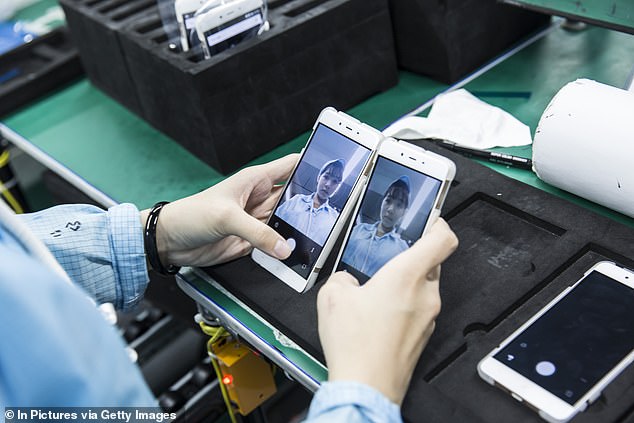
Employees and smartphones on the assembly line at the OnePlus manufacturing plant in Dongguan, China
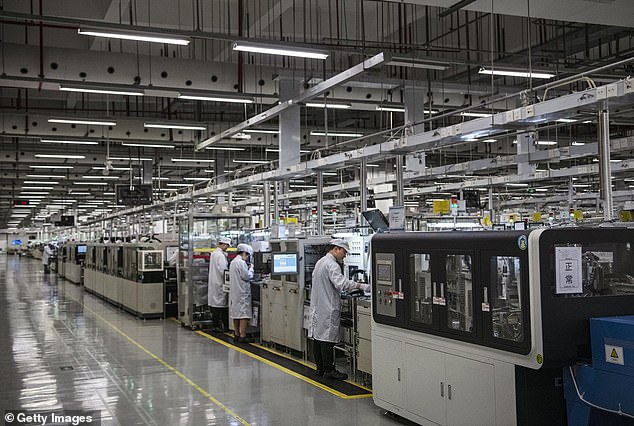
Workers are seen on the production line at Huawei’s production campus on April 11, 2019 in Dongguan, near Shenzhen, China.
What’s more, most of today’s devices are no longer modular.
Unlike an old-fashioned pager, made up of replaceable parts with plenty of internal space, you can’t replace the battery on your modern phone by simply removing the case and sliding it out—the device comes sealed as a single unit.
These characteristics mean that a malicious actor wanting to place explosives inside a phone produced in the last few years would need extremely impressive technical capability.
Alan Woodward, professor of cybersecurity at the University of Surrey, said: WITH WIRE‘When you open up a smartphone, I think the only way to introduce a significant amount of explosive would be to do something like replacing one of the components… (but that) would compromise its functionality.’
In other words, a saboteur would not only need to be able to… Unpack, modify and repack the device without leaving any marks, but yesAny such modification would likely result in some sort of malfunction, such as a noticeable reduction in battery life, heat production issues, or lack of functionality.
Most devices undergo rigorous performance and safety testing both during and after the manufacturing process, so any such issues would almost certainly be detected before the device reaches the hands of the final consumer.

Unlike an old-fashioned pager, made up of replaceable parts with plenty of internal space, you can’t replace the battery on your modern smartphone by simply unclipping the case and sliding it out—the device comes sealed as a single unit.
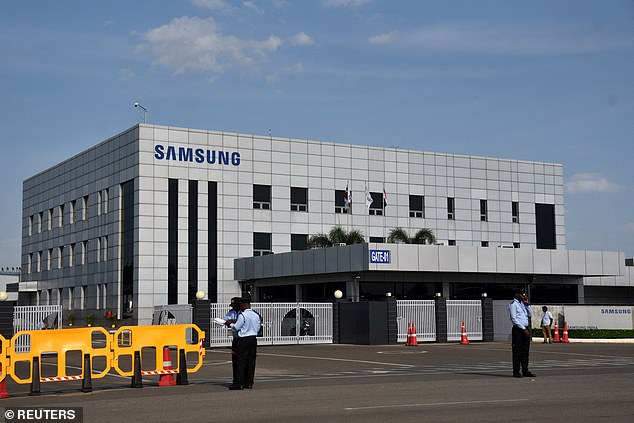
Security guards stand outside a Samsung facility near the city of Chennai, India, on September 16, 2024.
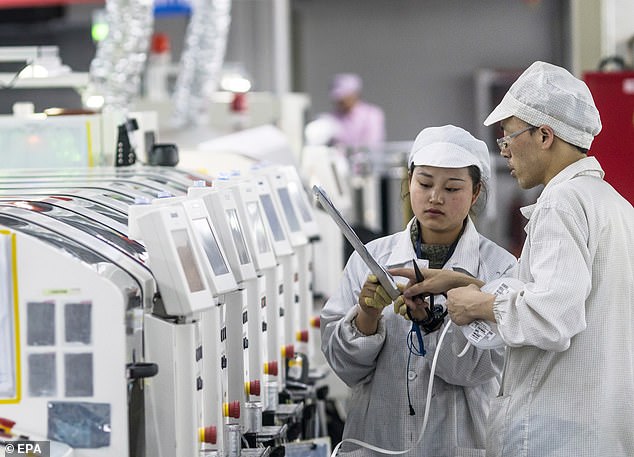
People work with machines at the Foxconn factory in Guiyang, Guizhou province, China, which produces technology for Apple and several other IT companies.
Much of the speculation surrounding the Hezbollah attack has focused on how the perpetrators managed to manipulate the devices before they reached Lebanon.
The details of the exploit remain extremely unclear, but Lebanese security sources believe that Israeli spies managed to modify the devices “to production level.”
Analysts and officials say an Israeli-operated front company likely oversaw one stage of the manufacturing process, ensuring the lethal payloads could be introduced without interruption or detection before being shipped to Lebanon.
“Mossad placed a plate inside the device containing explosive material that is coded. It is very difficult to detect by any means, even with any device or scanner,” a Lebanese security source told Reuters.
The underlying theory is that an Israeli operator sent an error code to the affected devices, causing them to beep or vibrate incessantly.
When the user pressed the button to cancel the alert, he activated the detonator and the device exploded in his hands.
But disrupting the supply chain for a modern smartphone or tablet is a much more difficult task.

There’s no wasted space in a modern smartphone, tablet or watch. Each device is engineered with ruthless precision, packed with hardware and packaged as compactly and efficiently as possible.
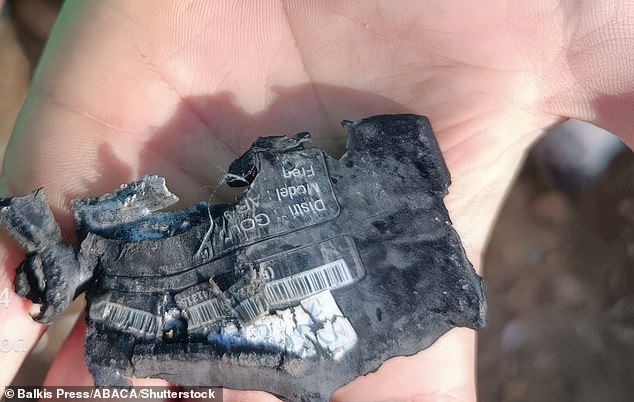
The remains of a destroyed pager that exploded on September 17, 2024
Although decades of globalisation mean that most of our technology is produced thousands of miles away and shipped around the world, the production process is now extremely efficient.
Production lines with modern technology are not only fast and precise, but also operate under strict security measures to prevent product details from being leaked to competitors.
Modern phones, especially high-end models like iPhones or flagship Android models, are also built using automated robotic assembly processes.
Another layer of protection comes from the sheer volume of devices produced.
The intercepted and modified Halcyon devices (probably by Mossad) were produced as part of a small production run by small retailers for a single customer: Hezbollah.
Disrupting that supply chain is simply not comparable to infiltrating a major manufacturer that mass-produces millions upon millions of devices each year.
“There will be curiosity (from large manufacturers), but their production and distribution chains are completely different from those of small-scale companies, including sellers of counterfeit transceivers,” said Lukasz Olejnik, a senior visiting researcher at the Department of War Studies at King’s College London. Al Jazeera.
“There is no reason to believe that they would be affected.”


